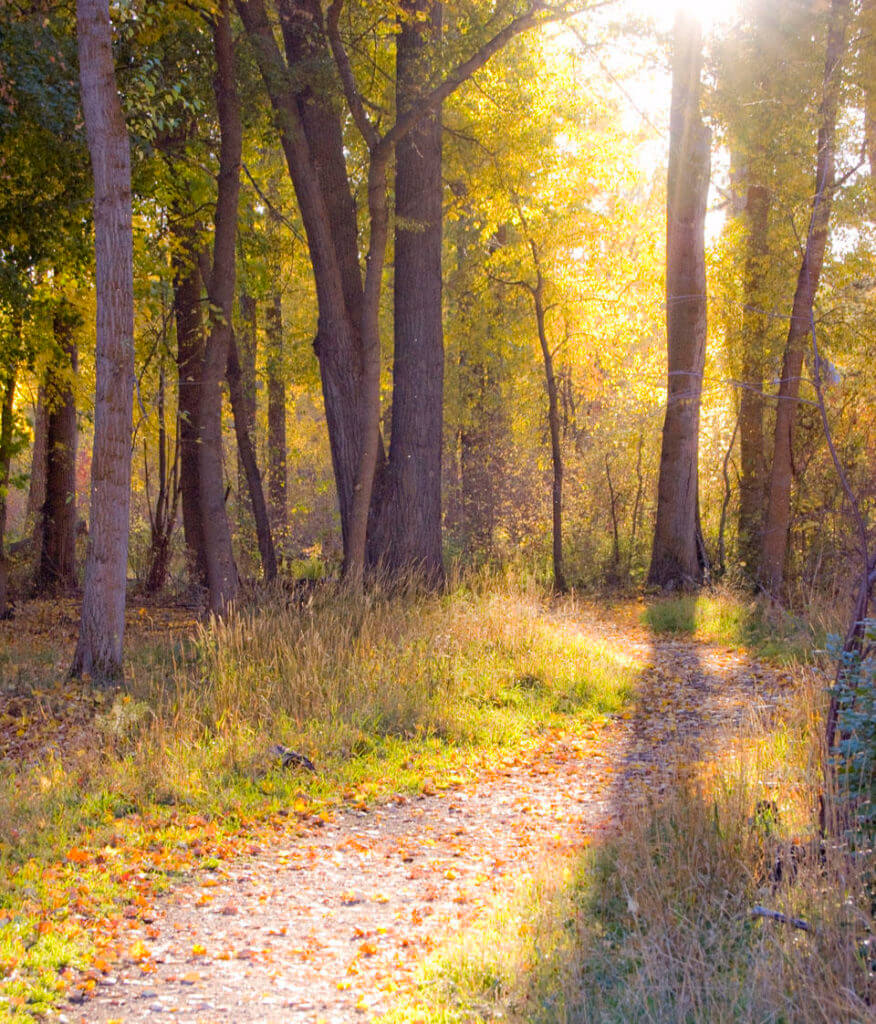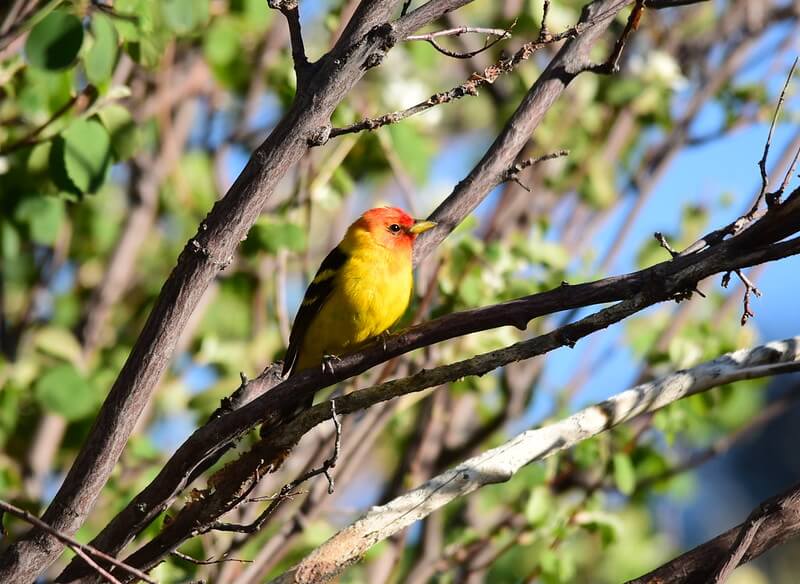Stressed? Science Says Take A Walk In The Woods
by Kaitlyn Anderson
Broadcast 9.11 & 9.16.2016 and 6.30 & 7.3.2020

More and more research reveals time spent outdoors relieves stress and improves physical and emotional well-being. Photo by Josh Burnham (CC-BY-NC-2).
Listen:
I feel the stress from the week lift off my shoulders as I breathe in the scent of ponderosa pine. Today, I have no papers to write, tests to take, or meetings to attend. This is my time to relax in the Montana wilderness. Even though I know that spending time in nature always makes me feel better, I don’t always take the time to immerse myself in it. And I’m not the only one. It seems fewer people escape from the human world while, ironically, more and more research reveals time spent in nature relieves stress and improves physical and emotional well-being.
Demographic trends over the past two centuries reveal that a number of people have migrated from the country to the city. In 1800, the number of people living in cities worldwide was only 3 percent. Most people tilled the soil and looked after their livestock. By 1900, the number had risen to 14 percent with the introduction of industrialization. In 2014, the number of people living in cities had skyrocketed to 83 percent. Today, most of us walk on concrete streets and sit at a desk for eight hours a day. Along with this migration to cities, more and more of us suffer from anxiety, depression, and severe behavioral problems. In the United States, one in every four adults suffers from a detectable mental disorder.
Over the last year, Samsung Electronics surveyed one hundred of their workers, and more than 70 percent said their routine desk jobs made them depressed. However, these people continue to work these jobs for the satisfaction of making money. Suppose you got a raise of $20,000. Instantly, you would feel a boost in your mental and physical health. Surprisingly, a person can receive this same boost by spending time in nature. According to research studies in Japan in 1982, a 15-minute nature-walk can drop stress hormones by 16 percent, blood pressure by 2 percent, and heart rate by 4 percent. A study from 2015 suggests the health benefits you receive from that $20,000 raise can be experienced just by living in a neighborhood surrounded by trees.
When people are in nature, they stop worrying about their daily lives and focus on the present. This focus is called mindfulness. Mindfulness has been used successfully to decrease anxiety and stress. For example, one outdoor program uses this state of mind to integrate U.S. military veterans back into society. The veterans participate in rigorous activities such as wildlife tracking, white-water rafting, rock climbing, and mountaineering. As their physical and mental abilities are pushed to the limit, they concentrate on where they are and what they are doing to keep themselves and their team members safe. Gradually, the veterans learn to shift their thoughts away from memories of war to the present with their family and friends.
So why do people react to nature in such positive ways? In 2015, Stanford researchers had 38 volunteers walk 90 minutes either on a busy street or through a large park. They scanned their brains before and after each walk, focusing on the prefrontal cortex. Activity in the prefrontal cortex is linked to depression and short-term memory loss. When there is less activity, a person is more positive and confident. The volunteers on the street had no changes in activity in this part of the brain — but the volunteers who walked in the park had less activity. Studies from the University of Michigan in 1995 supported these findings: volunteers had less activity in the prefrontal cortex just by looking at sights of sunsets, streams, and butterflies.
As technology becomes an increasingly large part of our lives, we need to take breaks in nature to allow our minds and bodies to recharge. Although numerous studies show the health benefits of being in nature, nothing is more convincing than the feeling of relief it brings us. I like the way researcher David Slayer puts it: “At the end of the day, we [go into] nature not because science says it does something to us, but because of how it makes us feel.”
Every week since 1991, Field Notes has inquired about Montana’s natural history. Field Notes are written by naturalists, students, and listeners about the puzzle-tree bark, eagle talons, woolly aphids, and giant puffballs of Western, Central and Southwestern Montana and aired weekly on Montana Public Radio.
Click here to read and listen to more Field Notes. Field Notes is available as a podcast! Subscribe on iTunes, Google Play, or wherever you listen to podcasts.
Interested in writing a Field Note? Contact Allison De Jong, Field Notes editor, at adejong [at] montananaturalist [dot] org or 406.327.0405.
Want to learn more about our programs as well as fun natural history facts and seasonal phenology? Sign up for our e-newsletter! You can also become a member and get discounts on our programs as well as free reciprocal admission to 300+ science centers in North America!












